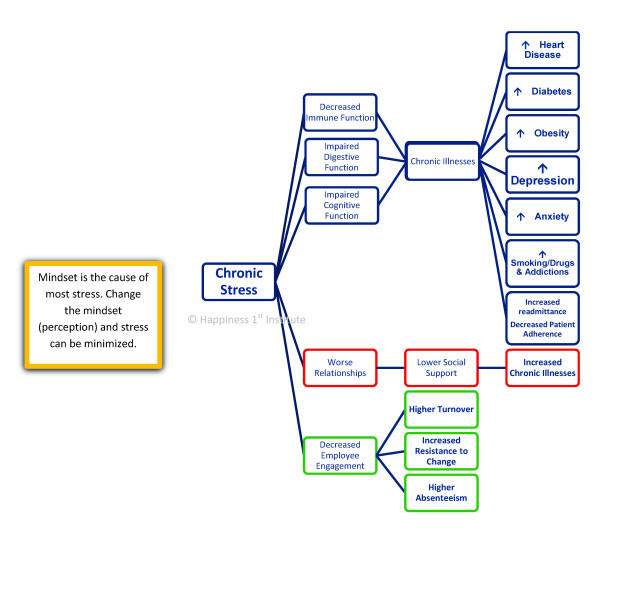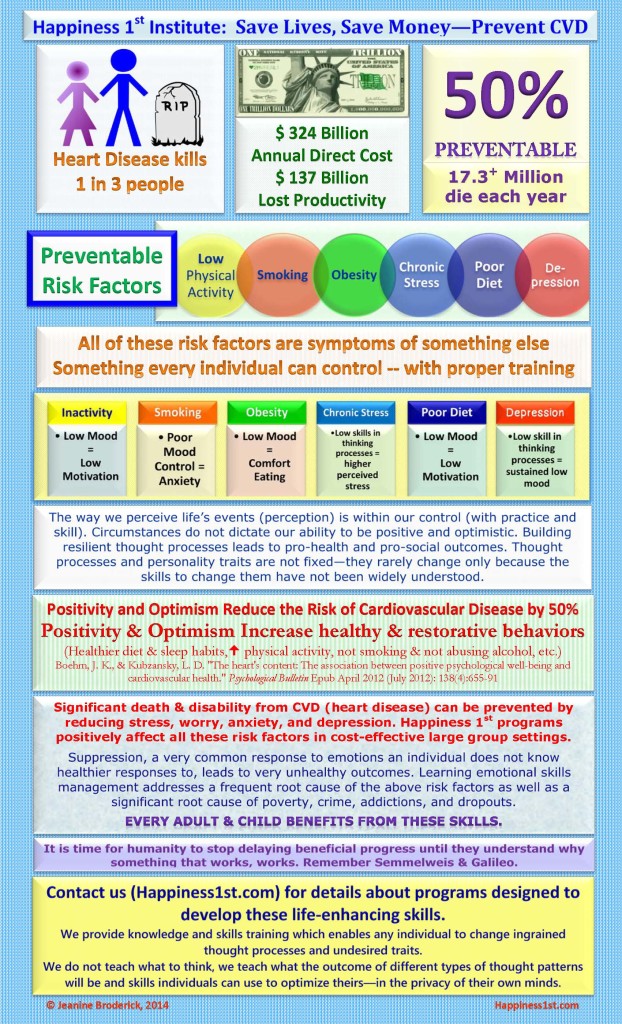Guest Post: I decided to post Dr. Lynn K. Jones’ blog because it is the best summary I’ve ever read on this topic. I believe the key to eliminating the stigma is education and knowledge. When society realizes the cost of stigma they will be willing to let it go. (Reprinted with permission.) Link to her website is here. – JJ
“Psycho.” “Loco.” “Insane.” These are the words that we all grew up with to describe someone that was—well, perhaps, a little off. Not only that. When we talked about one of these people, we said it with contempt: “He’s totally crazy!”
Tom Wootton heard playground taunts in his head when he was diagnosed with Bipolar Disorder at the age of 45. He flashed on a memory of everyone jeering at one of his classmates. “I thought: If I am bipolar, then I must be crazy. I just couldn’t accept that for a long time.”
Wootton is not alone. “This self-stigmatization, the internalizing of stigma, is one of the most significant barriers keeping people from accessing mental health treatment,” suggests Patrick W. Corrigan, Psy.D., professor, Institute of Psychology, Illinois Institute of Technology, principal investigator of the Chicago Consortium for Stigma Research and executive director of the Joint Research Programs in Psychiatric Rehabilitation. Fifty-four million Americans, nearly one in five, have a mental health disorder and nearly two-thirds of them won’t seek treatment1 because of stigma. That means that the playground stereotypes that affect our attitudes have consequences. Often fatal consequences.
“An indication of how strongly held these beliefs are, is that many people would rather tell employers that they committed a petty crime and served time in jail than admit to being in a psychiatric hospital,” according to Amy Watson, MSW, PhD, previously the program director of the Chicago Consortium for Stigma Research and presently assistant professor at the Jane Addams College of Social Work at the University of Illinois at Chicago.
What is Stigma?
“Stigma involves setting apart a group in society and associating particular characteristics with them, which we think of as stereotypes,” says Beth Angell, MSW, Ph.D., assistant professor of the School of Social Service Administration at the University of Chicago. “In the mind of the public, having a mental illness seems to be associated with some undesirable attribute, for example the belief that people with mental illness are more violent than others or that they lack the competence to be able to negotiate social roles, such as working.
“It is difficult to know exactly how those stereotypes come about; they can be caused by lots of factors. For many years people with mental illness were sequestered in institutions and hidden from society, having minimal contact with the public. During the 1950’s – 1960’s we slowly began a process where we deinstitutionalized people with mental illness and they began living in the community. As a result of that, a much more visible group of people with mental illness who needed help contributed to the public developing negative stereotypes about mental illness, such as violence or bizarre behavior.”
Not In My Backyard
The Santa Barbara, California woman who recently went on a killing spree is the type of image we often have fixed in our minds about people with mental illness. These images don’t just come from the nightly news; they also come from popular dramas on TV. The cameo that opens Law and Order, for example, is often a scene of a violence committed by a person with mental illness.
“We know that people with mental illness are statistically no more likely to be violent than persons without mental illness,” says Jack K. Martin, Ph.D., executive director of the Karl F. Schuessler Institute for Social Research and professor of Sociology at the University of Indiana. “Unfortunately, the overwhelming perception about people with mental illness is that they are very likely to become violent.”
Martin recently completed, along with his colleagues at the Indiana Consortium for Mental Health Services Research, the second of four studies on the impact stigma has on people with mental health problems.
The first study, completed in 1996, evaluated whether American’s attitudes about mental illness had changed, since they were last studied in 1950. “What we found was encouraging and discouraging at the same time,” says Martin. “People used to see the cause of the problem as something about the individual’s character. It used to be that people would say: ‘This was God’s will.’ ‘These are bad people.’ ‘This was their punishment.’ They don’t say that anymore. People now have an ability to explain mental illness accurately, defining it as a chemical imbalance or a genetic predisposition to mental illness, often triggered by stress; they have basically adapted a medical model. A real common point of view used to be that mental health problems weren’t treatable; people no longer believe that.
“At the same time, people unquestionably have high levels of willingness to shun people with mental illness and in particular, they don’t want to work with them and they don’t want someone who is mentally ill to join their family by marriage. So while they have more clarity about where mental illness comes from, they really want to avoid any contact.”
Stigma Sticks
Why are the stigmas associated with mental illness so sticky–especially when people are more educated about mental illness? More understanding should lead to acceptance, but “in fact there is evidence that people know much more about mental illness and that the stigma seems to be worse,” says Corrigan.
“Our work suggests that the biggest factor changing stigma is contact between people with mental illness and the rest of the population,” says Corrigan. He is trying to understand how to get consumers to go public with their mental health problems. The public needs to understand that many people with mental illness are functioning, fully contributing members of society. To better understand how to do this, Corrigan has studied the gay movement, since they have been so successful in coming out. “Just as the gay community had to realize that their power was increased as they came out of the closet, a similar realization needs to occur with people with mental illness. They are reluctant to do it, for understandable reasons, but nonetheless that is what needs to happen.”
Wootton is someone who has come out. He has written a book about his experience living with Bipolar Disorder, The Bipolar Advantage, is the president of his local Bipolar Disorder support group, has established a workshop program for people diagnosed with Bipolar Disorder and talks to groups several times a week about his mental health issues—both the pain and the progress. He says that other people with Bipolar Disorder appreciate what he is doing—so that they don’t have to do it. They feel too vulnerable. They fear the stigma.
The National Alliance of Mental Illness (NAMI) realizes what an impediment stigma is to people in mental health treatment and have launched a “StigmaBusters” campaign. One initiative is to get people with mental illness to speak out and they have provided the support and structure through their In Our Own Voice program. (See Sidebar.)
Just Like Anyone Else
Most people with mental health problems would not wish them on anyone. But more and more we are beginning to recognize that people with mental health problems don’t just have problems—they also have talents that make real contributions to society. Just like anyone else.
Wootton views his Bipolar Disorder as an “advantage.” Before his diagnosis he was a successful software programmer and earned millions by working feverishly at a highly creative pitch—for months on end–thanks to his uncontained Bipolar Disorder. Of course, he couldn’t sustain this and eventually hit a bipolar wall. Now he strikes a balance between controlling his bipolar disorder while still benefiting from his creative talents. This is a result of a combination of medication, therapy groups and what he describes as “ a lot of hard work.” He also works with his doctors to calibrate his medication so that he is still able to tap into his Bipolar capabilities. This means that he is somewhat outside what they consider his ideal range of functioning, but still within acceptable limits for him.
Or think of Monk, the endearing TV detective who is able to discern things beyond the reach of others on his police unit. He makes no bones about the fact that his compulsive cleanliness can be a hindrance, but the good outweighs the bad. He too, works on his issues in therapy, but he rejects medication. With medication he feels good, but he loses his special talents.
John Nash, portrayed in The Beautiful Mind, won the Nobel Prize for the work he did in the field of mathematics all the while struggling with the delusions and paranoia of schizophrenia. He learns to live with and control his delusional friends, which releases the power of his intellect to change the world.
Examples like these are introducing the public to a broader view of the attributes of mental illness; a view that people with mental illness may bring gifts—not just problems. Wootton adds that the message for treatment providers is that recovery is not overcoming mental illness, but harnessing it to preserve positive attributes.
Watson cautions that people with mental illness should be valued for who they are, including those that make everyday contributions like the rest of us. “People with mental illness are mostly like everyone else with similar ranges of intelligence and talents and they should not have to be extraordinary achievers to be appreciated.”
“Many professionals are the bastions of stigma,” says Corrigan. “Part of that might be because they tend to see people only when they are acutely ill. When they are in recovery and acting in a way to challenge a stigma they are not with them.
“People with mental illness can and do recover. It is contrary to what we all learned in graduate school, which is ‘once a schizophrenic always a schizophrenic.’ The long term follow up research suggests that 2/3 of people with intense schizophrenia can live successful lives; perhaps half of them will need job coaches or housing coaches for much of their life, but still people when they receive reasonable accommodation live pretty well with schizophrenia.”
Social Justice Challenge
The social cost of stigma associated with mental illness is high, because it translates into huge numbers of people with treatable mental illness not getting help. In Martin’s research, 45% of people said that if they had a mental illness they would not take medication for it, even though they believe that the medication would work. They are not worried about side effects. “They are worried that if they do take medication that someone is going to find out and then they will have to suffer the consequences, including the disruptions of marital relationships and work productivity,” says Martin.
Is a society without debilitating mental illness out of reach? It turns out it is not. There is a pilot program in Norway, being led by Thomas McGlashan, director of the Yale Psychiatric Institute that reportedly has been so successful that people with schizophrenia are not living on the streets. The key seems to be eliminating stigma. When stigma is reduced and people feel safe coming out they get treated at the early onset of the illness, which greatly improves their outcomes. The destigmatization campaign includes the education of students, primary care physicians and the general public.
So it is possible. The Norway experience shows us that when stigma is substantially eliminated and a supportive health care system is in place, the rights of people with mental illness are protected. When their rights are protected, people with mental illness can experience the full benefit of the progress that has been made in treatment without constraining their potential to contribute to our society.
Will the stereotypes of “psycho” and “loco” ever totally go away? Probably not. But we can reduce the impact of stigma and bring people to life-restoring treatment. Everyone wins when people with mental illness are not just tolerated but appreciated for who they are and can be full participants in society.
1 Surgeon General’s Report on Mental Health, 1999.
SIDEBAR
Fight Stigma: Become A StigmaBuster!
The National Alliance of Mental Illness (NAMI) StigmaBusters is a group of dedicated advocates across the country and around the world that seek to fight the inaccurate, hurtful representations of mental illness. Whether these images are found in TV, film, print, or other media, StigmBusters speak out and challenge stereotypes in an effort to educate society about the reality of mental illness and the courageous struggles faced by consumers and families every day. The StigmaBusters’ goal is to break down the barriers of ignorance, prejudice, or unfair discrimination by promoting education, understanding, and respect.
Each month, close to 20,000 advocates receive the NAMI StigmaBusters Alert, and it is read by countless others around the world online and in mental health centers, hospitals, universities and elsewhere. NAMI urges everyone to get involved: “Numbers do count, so let your voice be heard.”
By going to www.nami.org you can find out more about NAMI StigmaBusters and how you can report stigma, and sign up to receive NAMI’s StigmaBuster Alerts.
In Our Own Voice: Living with Mental Illness is a recovery, education presentation given by trained consumer presenters for other consumers, family members, friends, professionals, students of all academic levels, and lay audiences.
A brief, yet comprehensive interactive presentation about mental illness – including video, personal testimony, and discussion enriches the audience’s understanding of how people with these serious disorders cope with the reality of their illnesses while recovering and reclaiming productive lives.
In Our Own Voice: Living With Mental Illness was developed to provide a dialogue on the issues related to recovery from severe mental illnesses. The program is designed to provide a safe place for consumers to share the ups and downs of their recovery and learn from others. A trained consumer presenter leads the discussion. The program educates everyone about the ongoing recovery issues we face and the fulfilling lives that can be achieved.
Consumers that have participated in the program say, “We give hope, we educate, we open minds, and we change attitudes. We help eradicate the stigma surrounding mental illness.”
NAMI reports that research studies have shown that the In Our Own Voiceworks and that there is a significant decrease in stigma against mental illness among audience members after seeing the presentation.
Find out more about bringing the In Our Own Voice: Living With Mental Illness program to your community at www.nami.org.
Author: Dr. Lynn K. Jones
Certified Personal and Executive Coach
Dr. Lynn K. Jones is a Certified Personal and Executive Coach based in Santa Barbara, California and a sought after coach and consultant for organizations and individuals across the US. Her doctoral work completed at theWurzweiler School of Social Work, Yeshiva University concernedorganizational culture; she coaches, consults and trains organizations on what they need to do to create organizational cultures that are aligned with their vision and values using a process of Appreciative Inquiry. She coaches individual on achieving their reflected best selves. An MSW@USC faculty member, Dr. Lynn K. Jones, MSW, DSW, CSWM, teaches Human Behavior and Social Environment.


























